First long-wheelbase Porsche 911 E Prototype rides again
Not only is this the earliest long-wheelbase 911, it also boasts a huge number of factory firstson account of it being kept by Porsche as a testbed for a wealth of prototype parts...
Words Dan Furr
Photography Dan Sherwood
TRAILBLAZING 911 REVIVED PROTOTYPE DEBUTING WORLD FIRSTS
STUNNING DEBUT
The first long-wheelbase 911 rides again.

This job provides me with the opportunity to come into close contact with some of the world’s most extraordinary Porsches. Indeed, I’ve lost track of the number of historically significant 911s I’ve been lucky enough to encounter over the years, and though I never fail to get excited at the prospect of getting up close and personal — and, often, behind the wheel — of cars widely considered ‘unobtanium’, there’s something uniquely enticing about the Light Ivory-coloured air-cooled classic I’m in the company of today. You see, where many of the rare Porsches we showcase in this magazine fall into categories loosely described as ‘the first of this’, ‘the last of that’, ‘the most original surviving example of the other’, the long-wheelbase 911 seen here features factory firsts from nose to tail. Throw in a bunch of noted custodians, including works racing driver, Jo Siffert, and it becomes immediately apparent this is one of the most exceptional Porsches we’ve featured in our pages.
All of this makes the car’s discovery in an agricultural outbuilding all the more extraordinary. Yes, this is a genuine barn find. Not one of those cars an owner put in storage for a few years and then declared a barn find because they discovered a speck of dust on the bodywork when it came to repatriation. No, this 911, one of the most significant road cars in Porsche’s history, spent twenty-five years half-buried in hay bales on a farm in Scotland. Yes, you read that sentence correctly.

It is now in the possession of Martin Butler, a former airline pilot and serial classic 911 restorer from New Zealand. “I’ve always had a passion for Porsche,” he tells me. “My first car was a brand-new first-generation 997 Carrera 4S, bought in 2007. Since then, I’ve owned various Porsches, including a 993 Carrera RS, a 993 Turbo S and a 981 Cayman GTS, which I use for trackdays. My work as a pilot saw me travel between New Zealand and the UK twice a month, usually via Los Angeles. This enabled me to seek and buy down-at-heel classic 911s on the West Coast and ship them to the UK for restoration, long before this became popular practice.”
Concentrating his attention only on 911s manufactured between 1969 and 1973 (“I have a particular interest in early long-wheelbase 911s”), he enlisted the services of Lee Peacock at Autoclassica, a low-volume vehicle body restoration and paintwork specialist. The pair oversaw resurrection of two poorly air-cooled 911s to showroom condition prior to Martin’s acquisition of the Porsche seen here. “I saw this car listed on eBay back in September 2012,” he reveals. “It was presented as the first long-wheelbase 911. Obviously, I had my doubts, but I was in the UK when the auction ended and asked Lee to inspect the car in order to verify its claimed provenance.”
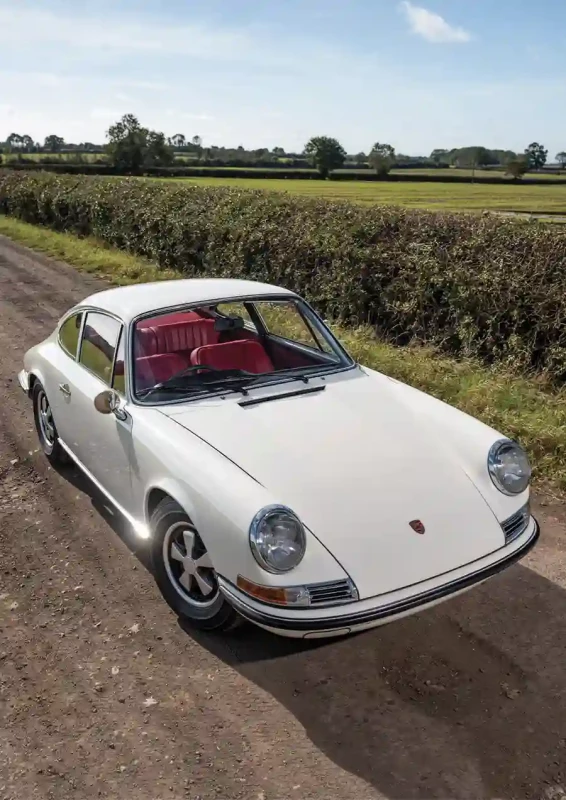
A year earlier, car was unearthed by Brendan Mullan and Mike Birtwhistle, two knowledgeable Porschephiles with a keen eye for detail. After hearing about the car and discovering its whereabouts, they carried out invaluable research to confirm its identity, which is listed as a factory prototype (versuch) on the accompanying Kardex. Despite the 911 being finished in a bluey-shade of black by the time Martin made its acquaintance, the document certified the unique original colour combination of Light Ivory over a red vinyl interior with matching corduroy inlays. Mercifully, the impotent Porsche was mostly complete, save for a questionably manufactured replica of a Carrera RS 2.7 ducktail in place of the standard engine lid. “I was delighted when Lee told me the original engine and gearbox were in situ,” Martin smiles. “The VIN number was stamped in all the right places, too.”
Specifically, this is the first long-wheelbase 911 chassis, carrying number 119200001. Needless to say, Martin wasted no time in arranging for the car to be transported to Lee’s workshop following confirmation his was the winning bid come auction end.
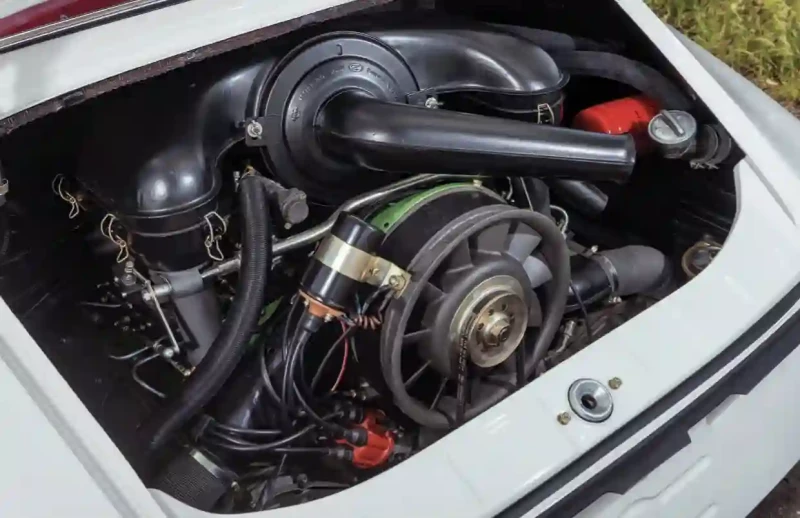
To own a Porsche representing the first of its kind is certainly something to cherish, but investigation revealed this peculiar 911 to be rather more than the original outing of a wheelbase extended by fifty-seven millimetres to combat the dramatic oversteer experienced by unsuspecting owners of short-wheelbase versions of the manufacturer’s flagship product. “The car was, in fact, manufactured as left-hand drive,” Martin continues. “It was built several months before long-wheelbase 911 series production began and was kept at the Porsche factory as a test mule for various technologies.” In little more than a few months, it was subjected to an not insignificant 44,896 miles of hard driving.
The conversion from left-hand drive to right-hand drive occurred on the 1st July 1969, when the car was bought by Paddy McNally, a former Autosport journalist who founded Allsport Management, a Swiss-based business controlling all Formula One advertising. McNally was a noted racing driver in the 1960s, famed for competing in the British Saloon Car Championship and for campaigning 911s. He also spent time working as manager for both James Hunt and Niki Lauda. Personal letters from McNally, fast approaching his eighty-sixth birthday, validate the car’s early history. Of significance, this is the only known 911 fully converted from left-hand drive to right-hand drive by the factory.
FLIGHT OF FANCY
British aviator and former racing driver, Rob Lamplough, was also one of the car’s early owners. During the late 1960s and early 1970s, he participated in various non-championship Formula One Grand Prix, as well as Formula Two and the European F5000 Championship. The car’s most distinguished custodian, however, was Jo Siffert. Heavily associated with Porsche’s sports car racing programme, the mild-mannered Swiss won the 1968 24 Hours of Daytona and the same year’s 12 Hours of Sebring with the 907. He also scored a series of impressive outings with the 917, not least in the 1969 Can-Am championship. In 1970, he famously won the Targa Florio, partnering with Brian Redman in a 908/3. This was the tenth of Porsche’s eleven wins at the legendary Sicilian road race.
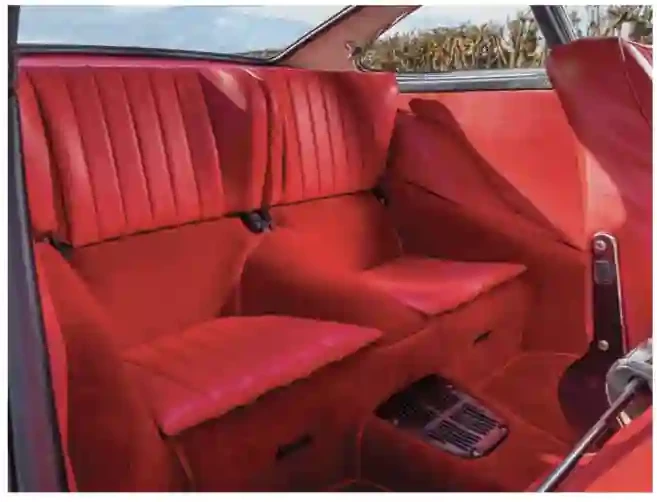
Due to Martin’s 911 serving as a rolling laboratory for the early part of its life, it was treated to a range of firsts, including the debut of a magnesium flat-six crankcase, as well as Porsche’s first mechanical fuel injection system. “I’m astounded by the fact this car came into public ownership,” he gasps. He’s right to be amazed — a modern factory prototype being released into the wild is unheard of. “The various technologies trialled on this Porsche, not to mention robust testing of prototype parts across significant mileage, makes this a super-special 911. The fact these important original components are present and correct today is hugely fortunate.”
The car retains its original versuch tags with factory prototype numbers, along with the standard VIN plate. Stripdown of the body also revealed the prototype build number stamped into a plate on the left-hand door jamb and underneath the left knee pad. This number was also inscribed in crayon on the metal instrument housing. With this in mind, acid dipping the shell was out of the question. Instead, Lee applied sympathetic media blasting, ensuring these unique artefacts were preserved. Of great interest is the unique mix of short-wheelbase and long-wheelbase parts present. The keen-eyed among you will have noted the short-wheelbase indicators, horn grilles and dashtop. Due to the appointment of dual frunk-located battery boxes for the long-wheelbase 911, the earlier indicator clusters would not fit. “Porsche engineers removed the centre section of each shortwheelbase closed indicator unit,” Martin observes. “In a nod to originality, I asked for the same when replacing old for new. It didn’t make sense to fit the later indicators when this is how the car was configured by Porsche, despite long-wheelbase front indicator units having open brackets to allow ease of fitment.”
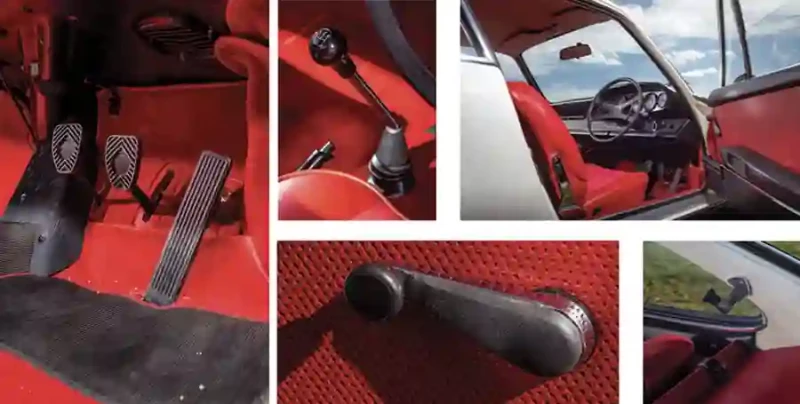
Replacement parts have been kept to the minimum — date-stamped items have been carefully restored. The five-and-a-half-inch-wide Fuchs fourteens, for example, are all marked January 1969, while the analogue cabin clock is marked March 1968. The window winder regulators carry April 1968 date stamps, as do the door catches. The oil temperature gauge and rev counter are marked May 1968. Credit to Hollywood Speedos in Los Angeles for rebuilding the dash dials to as-new condition.
“The front and rear latch panels were the worst affected parts of the car,” Martin describes. “They were badly corroded. The inner wings, the front suspension panel, fuel tank support, lower suspension mounts and battery boxes were also compromised. Lee discovered poor patch repairs from yesteryear in the rear heel panel, rear inner wings and torsion bar housings. This damage needed to be unpicked in order for as much original metalwork to be retained as he deemed possible.”
With the car stripped, the underseal applied to the shell was removed by hand in preparation for media blasting. During this painstaking process, Lee uncovered unusual markings on the body — along with the prototype build number found atop the instrument panel, the letter B was found hand-drawn on the underside of the rear seat bowl. Perhaps we shouldn’t be surprised? This is the first B-series 911, after all. The body was then placed on a Celette body jig with bracketry sourced specifically for this restoration. If a part was beyond saving, only genuine Porsche replacement items were used, including donor parts from same-age 911s. Period factory bodywork techniques were also incorporated into the process, ensuring a truly authentic finish. Glasurit and Würth products were used in the priming, sealing and painting stages of the build, replicating the approach adopted at the factory at the car’s time of manufacture.
Porsche made several modifications to the car’s bodywork to incorporate the then newly developed mechanical fuel injection system. For starters, the left-hand side of the engine bay crossmember seam was hammered flat to accommodate the injection pump. Prototype mounting brackets were designed and fabricated to support the newly developed fuel filter housing and wiring loom plugs. When the bracket was removed and cleaned in Lee’s workshop, a distinctive series of scribe marks were seen, demonstrating where the mounting holes were carefully measured and drilled.
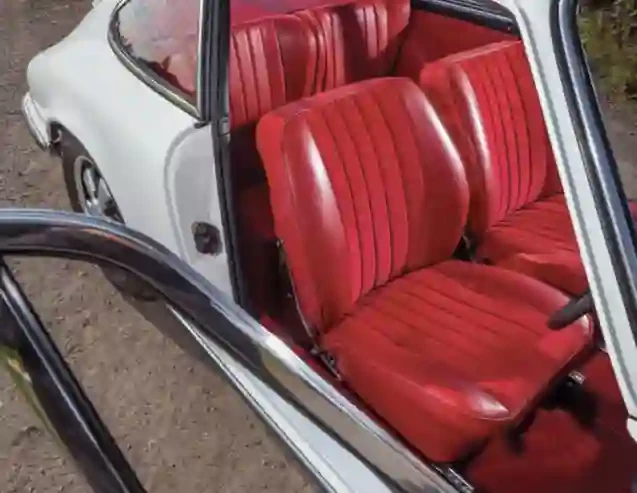
These kinds of discoveries are a fascinating insight into Porsche thinking. And there are many of them on this car, front to back. Apertures blanked, holes drilled, workingsout etched, all contributing to a visual guide outlining the planning and execution of the early 911’s evolutionary updates.
This surviving legacy of experimentation shows how Porsche tackled the conversion from left- to right-hand drive. A section of the bulkhead adjacent to the chassis number was removed, though careful consideration was given to preserving the VIN in its original location. The complete dash panel was then precisely cut and extracted beneath the windscreen scuttle panel, but care was taken to preserve the surrounding spot welds. A new right-hand drive dash and bulkhead panel was then gas-welded in place.
THE UNIQUE ORIGINAL COLOUR COMBINATION OF LIGHT IVORY OVER A RED VINYL INTERIOR WITH RED CORDUROY INLAYS
The right-hand front floor section was modified to enable installation of a right-hand drive pedal box. To receive the brake system’s master cylinder, the right-hand lower bulkhead panel was altered. As expected from Porsche engineers, the work was carried out to high quality and with precision. Evidence of the conversion’s gas welding remains visible today.
The 1969 model year brought wider, flared wheel arches to the 911’s now extended body. Martin’s car’s original front wings and rear quarter panels were found to be in a poor state. Well, this classic Porsche did spend twenty-five years in a Scottish barn, remember?! Thankfully, sections of the wheel arches remained intact. Lee carefully removed each panel’s underseal and primer to examine how these newer-style front wings were developed, before proceeding to replicate the design in fine detail.
As far as chassis equipment is concerned, all salvageable suspension components were stripped, media blasted, polished and zinc-plated in the correct factory finish. The 911’s braking system was excellent from the start, although cars built before 1968 make used of cast iron front and rear calipers. In another factory first, Martin’s Porsche prototype makes use of the first S-type aluminium calipers, which were manufactured with forty-eight-millimetre pistons before being loaded with vented discs and substantial pads. Due to heavy corrosion, however, these powerful stoppers required total restoration.
The cabin airbox is another prototype part. It was fabricated and held together with machine screws, rather than the retaining clips you’d find on a series production airbox. “The plastic had separated from the part’s metal at some point in the past, necessitating meticulous restoration to preserve the original blower,” Martin enthuses. “Like so many parts on this 911, the airbox served as the basis for all subsequent production units. While the car required restoration as a whole, a high number of its individual components needed restoration in their own right.”
From the 1969 production year, the 911’s heater incorporated a three-stage cabin air blower controlled by one of three dash levers. Fresh or heated air could suddenly be channelled to the windscreen or footwell. The prototype system on Martin’s car brought Porsche into the modern era of automotive interior heating and cooling systems. The system was carefully restored and reinstalled. Interestingly, the short-wheelbase hot air slider ventilation holes are blanked, just as they were when Porsche was playing with the car in period.
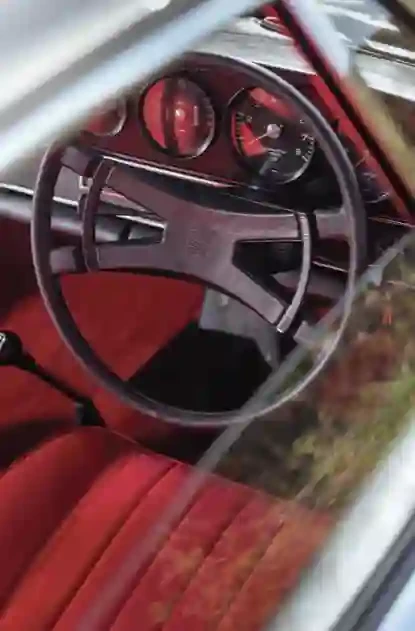
The aforementioned twin battery boxes contained twin twelve-volt 36Ah batteries. Two fuse blocks, each containing eight fuses, were moved to a vertical position on the left-hand front inner wing, adjacent to the newly introduced left-hand battery box. This required substantial reworking of the wiring system. “The prototype wiring loom incorporates additional wires for both a rear wiper and a Sportomatic gearbox, which goes to show the level of planning invested in this car by Porsche,” Martin relates. “These parts weren’t fitted, though. Neither was a radio. Additionally, the original door frames feature cutouts for electric window switches, but manual winders were installed. It’s worth noting, the window frames feature what’s thought to be the first fixed quarterlights installed on a 911.”
WHEEL OF FORTUNE
The original handbrake, heater controls, hand-throttle levers and gear shift were retained. The steering wheel and its hub are date-stamped July 1968. Pleasingly, the steering wheel’s leather trim remains in excellent order, requiring little more than a refresh, unlike the red vinyl interior, which had deteriorated beyond saving. All cabin furniture was taken to Gibson’s Car Trimmers in Harrogate for restoration. Once disassembled, sections of the original vinyl and corduroy were sampled from parts of the seats very well-preserved thanks to being tucked away and protected from sunlight. These swatches proved essential in sourcing the correct materials in the modern age.
“The main problem with getting hold of the correct corduroy was the number of vertical wales per inch,” Martin sighs. Wales is the term used to describe the ridges of piled yarn on corduroy fabric. They vary significantly in width, but with his dedication to keeping the car as it was originally configured, nothing but an identical match would do. “Enquiries were fired out to fabric suppliers and upholsterers the world over. You can imagine my surprise when the Gibson’s guys managed to get what they were looking for in Bradford, a mere thirty miles away from their base of operations!” Side by side, it is impossible to tell the difference between old and new fabrics. The same can’t be said of the seat recliners, which were in a terrible state, but are now good as new thanks to professional chrome replating.
The carpets also left a lot to be desired, which is why they were packaged and sent to Southbound Trimmers to be used as templates for a new set in the same colour with matching binding. The armrests and door pulls required only light restoration. The original sound-deadening material was found to be the early horsehair-and-bitumen combo favoured by Porsche during production of the short-wheelbase 911. Obviously, the material was removed during the process of media blasting. A similar compound utilising synthetic horsehair was installed in its place.
The Type 901/09 engine carries identification number 6290001. “To get a chassis and engine, both stamped 01, is the stuff of dreams,” Martin beams. “I asked Nick Fulljames at Redtek in Brackley to strip and rebuild the car’s flat-six. He’s always incredibly busy with client work, but he accepted the job, largely due to this engine’s special characteristics and, of course, its rarity.”
Nick concurs. “This is a pre-production two-litre 911 E powerplant,” he endorses. Incidentally, in this instance, E stands for Einspritzung, the German word for injection. “The engine number starts with a six to indicate a six-cylinder engine. The number two dictates E specification, while the nine highlights 1969 as the year of manufacture. The zeros and the lone one show this as the very first flat-six of its kind. Of note, in 1969, the sandcasted crankcase was replaced with a die-cast magnesium case, chain housings and valve covers.
This flat-six therefore makes use of the first-known Porsche magnesium crankcase.” As you’d expect, the engine underwent Redtek’s usual thorough machining operations, including stabilising crankcase movement occurring as a result of the magnesium case halves shifting. “Wear was in keeping with car’s claimed mileage,” Nick says of the number 81,472 registered on the odometer when Martin secured ownership. “We shuffle-pinned and corrected the line bore on the main journals, installed Time-Serts in the holes for the head studs, refaced the barrel decks and carried out oil pressure relief valve modification. I also reconditioned the throttle bodies with a brand-new set of spindle bushes.”

The castings had an unexpected number nineteen stamped into them. “This is not something I expected to find,” Nick asserts. “For reasons unknown, Porsche used a Sportomatic throttle housing on the right-hand side, using the air outlets for development purposes on what are essentially prototype throttle bodies. In contrast, the mechanical fuel injection pump doesn’t have a factory type tag fitted to its top. Ordinarily, this would be spurriveted in place. There are no holes for rivets, meaning this pump was of non-designated specification at the time of installation.”
Restoration of the pump confirmed type code PED6KL60/120RV1667 and serial number 803004. Of note, any Bosch type code featuring an RV designation indicates a special build, either experimental or prototype. “The unit was in reasonable condition,” Nick muses. “It required fully dismantling, cleaning and reassembly, though. I equipped it with service parts as required, including replacement seals and gaskets. Zinc and yellow passive plating was applied. The unit was calibrated to follow the figures for a two-litre 911 E engine due to the fact Bosch’s experimental calibration figures are not released into the public domain.”
The engine bay’s green fan shroud has all the characteristics you’d expect from an MFI boxer, but it doesn’t feature an access hole for adjusting idle control on the system’s pump. “Very unusual,” Nick cries. “The shroud itself required no additional painting or repair, and as such, is original in its entirety, which is fortunate, because this is the first-known 911 E shroud.”
The fan housing (early casting number 901106101 and ending 0R) has been modified to carry the coil. This coil position was carried over to all Porsche flat-six production engines until the arrival of the Carrera 3.2 for the 1984 model year. The quirks don’t end here. “When building the crank assembly, I noticed two digits are used for the connecting rod identification numbers, indicating a very early batch of rods for this type of engine,” Nick remarks. “The applicable series production rods feature three-digit stamps, indicating yet more prototype parts are at play on Martin’s car. While it was in my workshop, the engine was kitted-out with Mahle barrels and pistons. The cylinder heads were fully reconditioned with new valve guides, new valves, three-angle seat cuts and refaced mating surfaces.”

At some point in its history, this intriguing 911 was modified to accept points, as opposed to a siliconcontrolled rectifier (SCR) relay. Two holes for mounting a capacitor discharge ignition (CDI) box were identified, leading both SCR and CDI to be reinstated during the car’s restoration. As such, this can be considered the first 911 with a CDI ignition system, which improves combustion and reduces fouling of spark plugs. The transmission (Type 901/03, number 2281682) is an all-magnesium casing, as used in the 911 and 912 from late 1968 through to the end of 1971. The gearbox was fully stripped and inspected. Once again, the level of wear tallied with the odometer scoreboard. The bearings showed signs of slight wear, but not enough to warrant replacement parts.
END OF THE LINE
Restoration was finished in October 2023, when the car emerged from the Milton Keynes workshops of GDC Automotive, operated by classic sports car restorer, Gary Cook. While in his care, this pretty 911 was fully reassembled and treated to a final finish meeting its owner’s exacting standards. “He did an absolutely brilliant job,” Martin says, praising Gary’s fastidious attention to detail. “I take my hat off to every specialist involved in this project. This has been an extensive restoration, but one I needed to get spot-on. Everyone working on the car has delivered in spades.”
Following our photo shoot outside Gary’s premises, the car was swiftly taken to Porsche Centre Silverstone, where visitors can see this revitalised prototype in the metal. From here, it will be shipped to Autoworld in Brussels, where it will be on display “for at least six months” alongside key exhibits from the Porsche Museum for a special exhibition celebrating seventy-five years of the Stuttgart brand. “This has been a no-expense- spared restoration,” Martin reviews. “I’m keen for a high number of 911 enthusiasts to see the car following completion of the project. Even as its owner, I’m blown away by the significance of this Porsche in the company’s production timeline.” Believe me, Martin, you’re not the only one.
Above Conversion to righthand drive was carried out at the factory and saw much in the way of modification to the floor and bulkhead, not least to allow for a right-hand drive pedal box and master cylinder. Right Manual window winders poke out of the freshly retrimmed door cards, although the car was prepared for power windows.
THIS PRETTY 911 WAS FULLY REASSEMBLED AND TREATED TO A FINAL FINISH MEETING ITS OWNER’S EXACTING STANDARDS
Above A trio of famous motorsport men, including former Porsche works driver, Jo Siffert, owned this unique 911 prior to Martin’s name appearing on its logbook. Above Short-wheelbase indicators and horn grilles feature on this long-wheelbase body, although modification of the light clusters was required to clear the battery boxes Right Behind the restored Fuchs wheels lie the first 911 S all-aluminium brake calipers.
Below Many additional minor components were sourced from respected Porsche parts retailers, including Restoration Design Europe, Rose Passion and Stoddard.
THE ORIGINAL DOOR FRAMES FEATURE CUTOUTS FOR ELECTRIC WINDOW SWITCHES, BUT MANUAL WINDERS WERE INSTALLED
Above Prototype two-litre 911 E engine features many factory firsts, including the mechanical fuel injection system, engine shroud, coil position, magnesium crankcase and Sportomaticready throttle bodies, along with very early 911 E conrods.
Above and below Corduroy-trimmed interior is stunning and matches the same unique specification given to the car when it was originally built.
PORSCHE MADE SEVERAL MODIFICATIONS TO THE CAR’S BODY TO INCORPORATE THE NEWLY DEVELOPED MFI SYSTEM
Above and below Light Ivory is period perfect and replaces the blue-tinted black covering the car when it was taking up residence in a Scottish barn.


